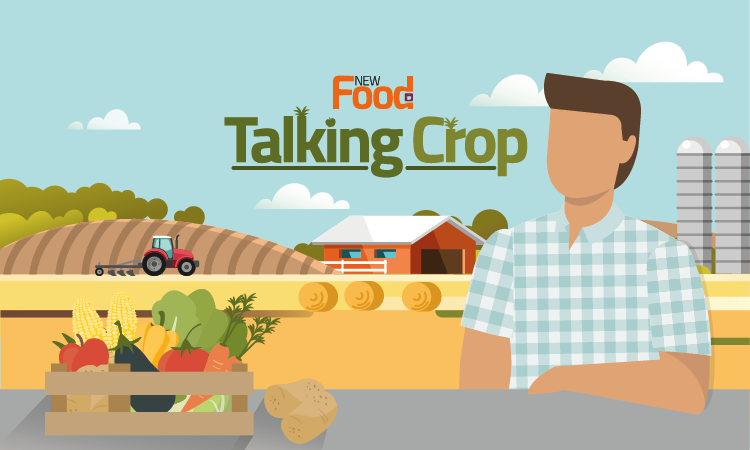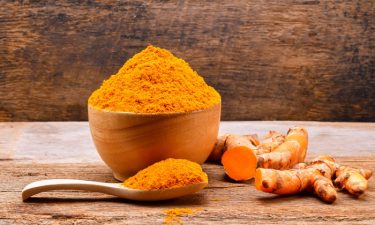How is COVID-19 impacting the agri-food industry?
- Like
- Digg
- Del
- Tumblr
- VKontakte
- Buffer
- Love This
- Odnoklassniki
- Meneame
- Blogger
- Amazon
- Yahoo Mail
- Gmail
- AOL
- Newsvine
- HackerNews
- Evernote
- MySpace
- Mail.ru
- Viadeo
- Line
- Comments
- Yummly
- SMS
- Viber
- Telegram
- Subscribe
- Skype
- Facebook Messenger
- Kakao
- LiveJournal
- Yammer
- Edgar
- Fintel
- Mix
- Instapaper
- Copy Link
Posted: 7 May 2020 | Gideon Ashworth | No comments yet
Welcome to the first edition of Gideon Ashworth’s ‘Talking Crop’, a monthly column which will explore a range of topics relating to the agri-food world.


Personally, I like to talk crop and all that it encompasses, from soil science, to pest and disease management, and farmers’ responsibility to conserve and nurture our green spaces within evolving economic landscapes…I could go on!
The world of agri-food is vast, with endless crop case studies to be covered. As well as taking a satellite view of global agri-food, I want to explore how we’re developing agri-food and how it is developing us, as people and professionals.
I would like to start with some thoughts on the current COVID-19 pandemic, with my deepest sympathies to families who have lost loved ones. There isn’t an individual or industry that has not been affected to some degree, many to a level of severity which will take years to recover from. The food industry has coped remarkably well in the short term to ensure supermarket shelves are stocked through a time of unprecedented uplift in demand. For this piece, I don’t want to dwell on the immediate impact of the crisis, as food industry professionals we are a malleable and resilient breed; we are built for this kind of test of character. My current thoughts are focused on the future risks and emerging hazards that we should be considering within our risk assessments.
Many of the world’s spices are still grown in the varying climatic regions of India. Since their lockdown commenced there has been significant disruption to internal supply routes, with truck drivers returning to their villages and country-wide restrictions in place. At the time of writing, the country is divided into traffic lighted zones which define levels of restrictions. Inter-region (equivalent of British counties) travel requires a 14-day quarantine period, which is totally impractical for productive business travel. Many farmers are reporting on-time-harvest, although largely disrupted due to labour displacement and therefore lack of labour availability.


Turmeric is at potential risk of adulteration
If we look at a crop that many of us are familiar with, for example turmeric (pictured), recent harvests have been dried but not boiled. Under normal practice, the turmeric fingers are boiled to encourage homogeneity of colour which also acts as a postharvest kill step. Across many crops there is now a longer time projected for field-based postharvest storage prior to further processing (eg, steam sterilisation and milling/grinding), offering opportunity for fungal growth and therefore, potential for mycotoxin accumulation. If the crop has degraded in quality (flavour/colour), we should factor in the possibility of illegal dyes being applied to substandard product to increase the perceived quality attributes and market value.
Furthermore, if the post-COVID-19 world is in economic strife, we must be aware of a significantly increased risk of deliberate Economically Motivated Adulteration (EMA) across a range of foods – potentially within some food groups and categories that we have not previously considered. Be that with spent product, the aforementioned illegal dyes, counterfeiting, blending with substandard product or with an entirely different genus or even method of adulteration; the future has risk caused by the present. We will serve well by harnessing our curiosity to consider what is around every corner.
There are potential threats that I have not mentioned in this opening piece which will be discussed further in an upcoming podcast with New Food. I believe there is a strong possibility of emerging dangers that we are not yet aware of. The prospect of countries imposing export restrictions on crops does little to quell the need for ongoing and evolving risk assessments. In the podcast we will discuss the value of investment in developing the technologies to monitor and maintain high standards of authenticity, food safety and quality attributes of our foods. Throughout COVID-19 restrictions, Competent Authorities across Europe are seemingly reducing testing regimes that capture hazards and non-compliant product, therefore technical supply chain management is likely to increase further in relevance. As a result, testing schedules for hazards, either in house or with external laboratory collaboration, are crucial; whilst mitigating food fraud with the aid of technology and risk assessment bolsters a solid Food Defence strategy. For example, at Bart Ingredients we engage with external laboratories for routine analysis of our foods, while verifying the authenticity of every batch of single ingredient raw material by means of in-house NIR Spectroscopy.
As the food industry continues to maintain food supply to shelf, we must not overlook, nor take lightly, the global requirements and relevance of trained and capable agricultural workforces for the planting, harvesting and handling of our crops. We were warned of the impact of Brexit on the availability of agricultural labour in the UK, now we are facing a global crisis that pales our domestic political debates into insignificance. On the other hand, perhaps the ‘B’ word partially primed our food systems for this crisis?
There are many topics to attack in the monthly column, with such a diverse range of challenges and innovative solutions at our disposal.
I look forward to talking crop with you,
Gideon
Related topics
COVID-19, Ingredients, Recruitment & workforce, Supermarket, Supply chain, Trade & Economy









